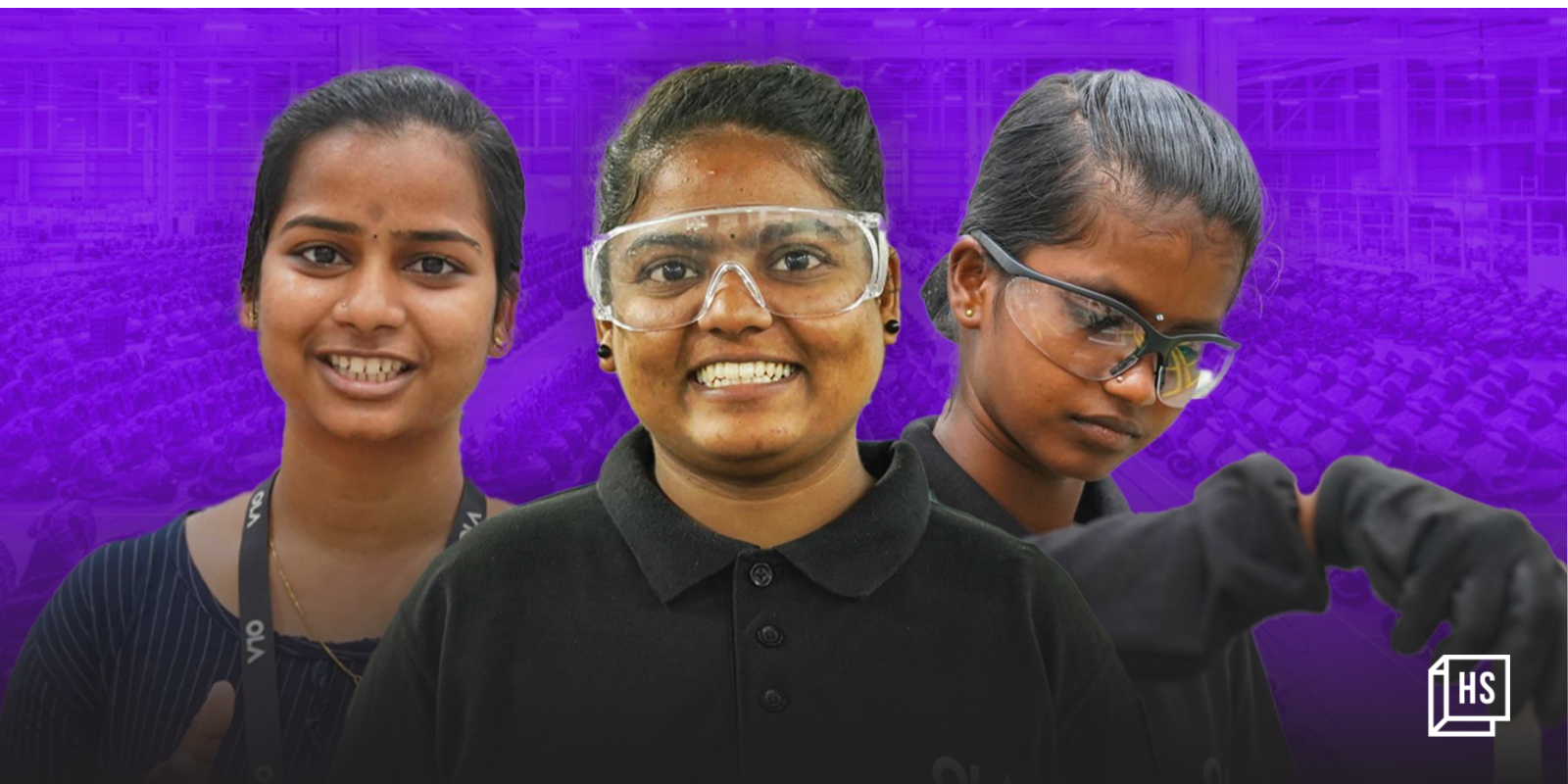
Two years ago, when Ola’s Co-founder and CEO Bhavish Aggarwal and his team sat down to study the gender ratio in the automotive industry, they discovered that women were no more than 30% of the workforce.
And even within that, most of the women were restricted to minor responsibilities in small factory settings.
“Incidentally, we were watching the women’s cricket world cup that year, and our girls had performed very well. It then struck me that, when our women could win a cricket match, there was no reason why they couldn’t work in a factory,” says Aggarwal, in an interview with Shradha Sharma, Founder and CEO of YourStory.
<div class="tweet embed" contenteditable="false" id="1687425470219075585" data-id="1687425470219075585" data-url="https://twitter.com/YourStoryCo/status/1687425470219075585" data-html="
You must have seen pictures of women working in a factory at Ola Electric. 👩🏻🏭
They call themselves the 'Shernis of Ola!' 💪🏻@OlaElectric Founder, Bhavish Aggarwal (@bhash), reveals the idea that gave rise to the all-women 'future-factory', in conversation with @SharmaShradha.… pic.twitter.com/2dL0Z9CfCP
— YourStory (@YourStoryCo) August 4, 2023
” data-type=”tweet” align=”center”>
You must have seen pictures of women working in a factory at Ola Electric. 👩🏻🏭
They call themselves the ‘Shernis of Ola!’ 💪🏻@OlaElectric Founder, Bhavish Aggarwal (@bhash), reveals the idea that gave rise to the all-women ‘future-factory’, in conversation with @SharmaShradha.… pic.twitter.com/2dL0Z9CfCP
— YourStory (@YourStoryCo) August 4, 2023
In September 2021, Aggarwal announced that Ola Electric’s Future factory in Tamil Nadu—where it manufactures its electric scooters—would be run entirely by women and employ over 10,000 women workers.
“When you compare the industrial workforce of other countries in East Asia or even the Western world with India, you see that the participation of women in our country is much lower,” he says.
“The general perception is that women’s family situation may not allow them to explore this career option or the woman herself may not be skilled enough to work in this area. But none of that is true.”
Aggarwal says he realised that industrialists were the only cohort to be blamed, who did not dream about taking in more women or envisioned how to do it.
He then put out a challenge to his team that the 500-acre factory would be run entirely by women, and “most thought that I had lost my mind,” he says.
Today, it is safe to say that Ola Electric has made some solid headway in this direction with more than 3,000 women working in the factory. As a pathbreaking policy, Futurefactory has ensured that the entire manufacturing is done only by women.
Nonetheless, this proposition was met with challenges initially.
“We didn’t know where we would get the girls from and how they would manage family opposition and cultural restrictions. But we wanted to set this up as an example in the industry in India, to show that a 100% women factory was possible,” says Aggarwal.
“Not just in electronics, which is light manufacturing, but also in automotives, which is heavy manufacturing,” he adds.
India’s success in the electrification of its automotive industry is at the heart of the climate change debate globally because of its sheer population.
Aggarwal says all the women at the Futurefactory who are striving towards this goal are degree and diploma holders and work passionately in their roles.
“We have invested significantly to train and upskill them in core manufacturing skills, and they will be responsible for the entire production of every vehicle manufactured at Ola Futurefactory,” he says.
Full interview to release on our Youtube Channel. Please subscribe and click on the bell icon to get notifications for updates.
Edited by Suman Singh










